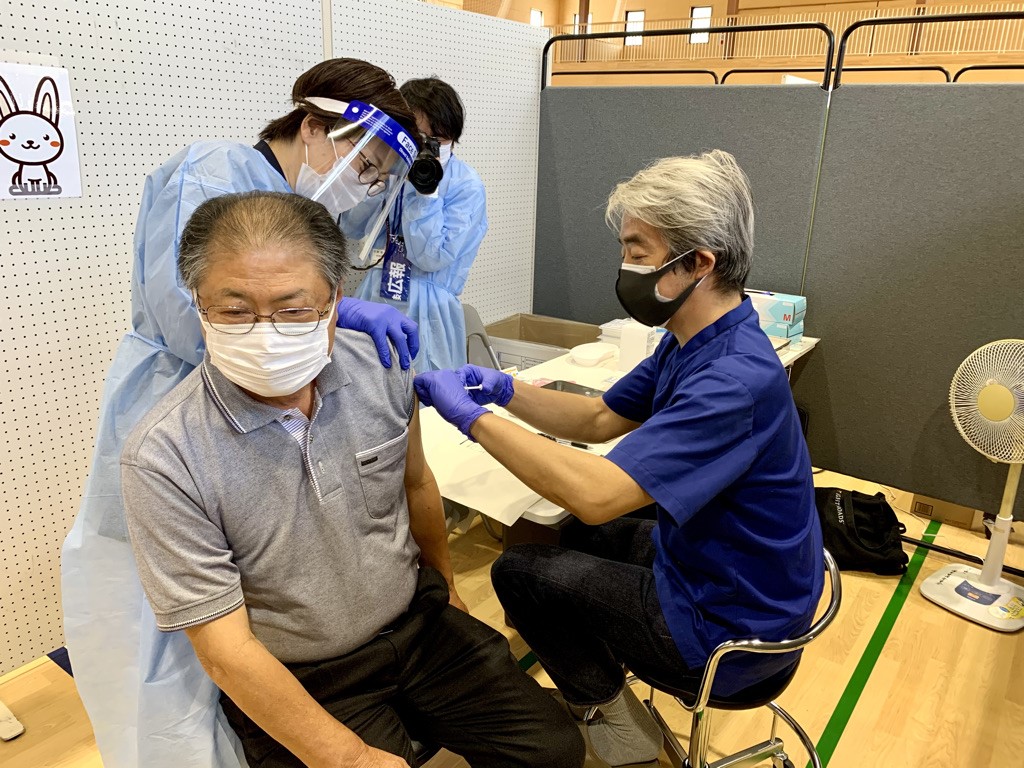
Addressing Japan’s “drug loss – drug lag”: An analysis and proposals for revamp
September 6, 2024
R-2024-015E
Declining Japanese share in global drug market
The Japanese pharmaceutical market has been experiencing a prolonged decline. In the early 1980s, it accounted for over 25% of the global market, surpassing the combined European markets (1). However, over the next 30 years China overtook Japan. In 2023, Japan’s share had dropped to 4.4% of the world market, putting it nearly on par with the German market (2). This decline has mirrored a similar downturn in Japan’s GDP.
The research-driven pharmaceutical industry attributes this decrease to the Japan’s drug pricing policies, which include regular and exceptional price reductions that have progressively affected most products. These measures have resulted in market stagnation, while the rest of the world has enjoyed stable growth. The disincentive is so significant that the industry stakeholders coined the terms “drug loss – drug lag” to describe the delayed entry of new drugs into the Japanese market (3).
This delay is attributable to unattractive pricing policies that do not justify the development and regulatory efforts, which are sometimes atypical compared to other major markets, required by Japanese authorities for product approval. Recently, the Japanese Ministry of Health, Labour and Welfare (MHLW) reported that among the identified “unapproved drugs,” 86 had not yet initiated their development process in Japan, constituting the category of “drug loss,” based on March 2023 data. Data published recently by the Japan Pharmaceutical Manufacturers Association (JPMA), the local industry association, show that this number has only slightly decreased to 82 as of March 2024. During the same period, the “drug lag” category counted 57 products in 2023 and 53 in 2024 (4, 5).
In the previous century, the significant global share of the Japanese market could be attributed to the strong discovery capabilities of Japanese pharmaceutical companies, combined with a pricing system that was more supportive of new products. Antibiotics, antihypertensive agents, cholesterol-lowering agents, and some cancer therapies contributed to their success, with many of these products being discovered by Japanese scientists. However, at the beginning of the new century, very few Japanese companies capitalized on the rise of biologicals, leading to the development of a new global market without significant contributions from Japan.
Similarly, in the vaccine field, various factors led to a closed market protected from external competitions but not stimulated to innovate. This resulted in missed opportunities to create new generations of vaccines (e.g., Haemophilus influenzae type b, pneumococcal, HPV, and rotavirus vaccines) until they were prompted by pandemic crises such as H1N1, COVID-19, and the emergence of mRNA technology. This outcome seems paradoxical for a country with significant scientific contributions over the last 20 years, including multiple Nobel Prizes and other accolades. It appears that scientific innovation is no longer translating into commercial innovation.
Key issues in Japan’s drug market
Two primary factors negatively impact local market dynamics from our perspective: a lack of local innovation from Japanese startups and the local pharmaceutical industry; and a pricing environment that does not attract external innovation. Let us examine this hypothesis and further investigate the topic of innovation.
In recent years, innovation has been primarily driven by small venture biotech companies. From 2015 to 2021, about 65% of drug approvals in the United States originated from these companies, and 72% of large pharma companies’ pipelines came from external sources through licensing or merger and acquisitions (M&A) (6). Notably, eight out of the top ten drugs sold globally were not invented by their marketing companies. This trend is expected to continue, with 66% of new Phase I clinical trials initiated globally by small venture biotech companies.
In addition, we must note here that only 4% of all new clinical trials originate from Japan-based biotech companies (7). These facts help explain why “drug lag – drug loss” occurs in Japan: small biotech firms, primarily headquartered in the US, lack sufficient resources to develop their assets concurrently in the US, Europe, and Japan (a typical biotech with no marketed products employs about 30 to 50 people), limiting their capacity to expand into multiple markets simultaneously (8).
Negative pricing policies would be a primary deterrent to speeding up access to any market, but the “drug loss – drug lag” faced by Japan is not a result of these policies alone. While it is uncommon for a ‘big pharma’ company to voluntarily delay patient access to its products solely due to pricing, a less favorable pricing environment does not support Japan during global product shortages and supply chain limitations. This was visible in the allocation of certain vaccines or GLP-1 agonist products, which often benefited the US market first for financial reasons.
Indeed, in the global drug R&D ecosystem, Japan is often deprioritized due to unique regulatory requirements, such as previous requirements for data in Japanese subjects, monitoring of all patients at launch for some products, or the obsolete two-week prescription rule at launch requiring companies to produce specific packaging for Japan only. Additionally, costly and cumbersome development activities, perceived market complexity, and language barriers contribute to this de-prioritization. As a result, companies typically approach Japan later in search for a licensing partner, or their entry into the Japanese market becomes a logical consequence of M&A after initial trials in the US and/or Europe.
Moreover, reference pricing—a strategy where the price of a new drug is set in relation to existing drugs within the same therapeutic category—and inclusion of potentially lower Japan prices in price determination by some countries (e.g., South Korea, Taiwan) negatively affect the speed of new product introduction by global pharmaceutical companies. Less favorable entry prices in Japan make it a second priority for product launches. This also impacts smaller biotech companies, which cannot afford any distraction from their US market pricing strategy at launch.
Additionally, the Japanese ‘cost accounting pricing method’, typically applied to new modalities with limited comparators, is also part of the problem. This method requires companies to disclose confidential and variable internal cost elements to enjoy various potential premiums. However, since few companies are willing to disclose such information, these premiums are often not applied in practice. Furthermore, it relies on irrelevant or obsolete cost standards, such as outdated human resource costs for experts, in its profit and loss assessment used for pricing calculation (9).
Revamping the Japanese innovation eco-system: current policy directions
Fully aware of these issues, Japanese authorities have implemented new measures to facilitate market access for overseas biotech and startups. An important measure introduced late December 2023 allows Japan sites to be added to late-stage, global multi-centric trials without the obligation to provide phase I data in Japanese subjects (10). This offers a theoretical opportunity for simultaneous drug approval with the US and Europe. Along with additional simplification measures, such as centralizing Institutional Review Board (IRB) processes, relaxing the ‘Sakigake’ criteria (fast-track pathway for “pioneering” drugs), and accelerating the cycle for regulatory approvals, these efforts aim to reduce the “drug loss – drug lag” in Japan.
While these measures benefit R&D-focused pharmaceutical companies, whether from Japan of from elsewhere, they do not address the fundamental issue of balancing access to innovation with drug price reductions. Although they should help bring external discoveries to Japan sooner, what options exist to stimulate local innovation? This core question has been debated by multiple political groups, including government panels, project teams from Japan MHLW, industry groups, and think-tanks, such as Cabinet Office’s “Regulatory Reform Promotion Council”, the ruling Liberal Democratic Party’s “Research Commission on the Social Security System”, the government expert panel’s “Council for the Rapid Delivery of the Latest Medicines to Public through the Improvement of Drug Discovery and Development Capabilities” among others, over the last few months (11). Extensive efforts have been made to benchmark various systems, notably the British innovation ecosystem. Innovation output can be measured by the number of company creations and investments in early-stage funding for startups.
Over the last three years, the average yearly number of deals (registered financial rounds for unlisted new bio-ventures) has been around 2,200 in the US and 1,000 in Europe. The UK, with an average of 400 deals per year, represents one-third of Europe’s deals. With a population twice that of the UK, Japan counts less than 100 deals per year, illustrating the significant innovation gap (12). With fewer deals and less investment in early-stage ventures, Japan initiates fewer clinical trials, mostly started by a limited number of small ventures, being overtaken by China and now by South Korea (7). This also results in fewer publications and citations in scientific journals, with Japan no longer in the top 10 countries for scientific communications, falling behind countries like Spain, South Korea, and India (13). Japanese names are scarce in the database of the most frequently cited scientists globally.
Another consequence, and also a cause, of the limitations in the Japanese biotech ecosystem is the insufficient number of qualified experts for commercial innovation and venture creation, such as venture capitalists, accelerators, financial experts, and entrepreneurs. Due to limited activity, their learning curve is slow compared to their counterparts in the US, Europe and Asia. The Japanese authorities, exemplified by the MHLW’s “Project Team on Healthcare Startup Acceleration,” understand these challenges (14) and, after benchmarking success stories from other countries such as the UK, are taking measures to support the local innovation ecosystem.
A significant development was the official recognition by the Japanese authorities, including both the MHLW and the Ministry of Economy, Trade and Industry (METI), of the role that the private sector could play in fostering innovation. Starting in 2022, the Japan Agency for Medical Research and Development (AMED)[1] was allocated a budget of JPY 350 B (about $ 2.5 billion at that time) over ten years as part of a new program called the “Strengthening Program for Pharmaceutical Startup Ecosystem.” (15) This program allows AMED to provide grants to startups that meet certain criteria, the most critical being investment from AMED-certified venture capitals, with such investments receiving up to twice matching grants from AMED. In December 2023, a supplementary budget was approved by the Japanese Diet, which included additional measures to support startups.
Measures in preparation should reflect the conclusions of the final report from the “Council for the Rapid Delivery of the Latest Medicines to Public through the Improvement of Drug Discovery and Development Capabilities,” chaired by Hideki Murai, Deputy Chief Cabinet Secretary (11). Based on the recently published interim report, these measures should promote public-private partnerships to develop innovative therapeutic solutions, enhance Japan’s attractiveness for drug discovery, and focus on attracting investments and talents from abroad. A forum consisting of domestic and foreign drug makers and venture capital firms will be created for that purpose.
Another series of recommendations from a MHLW project team includes propositions to support incubation of healthcare startups, including a milestone-focused funding scheme similar to that of the US Defense Advanced Research Projects Agency (DARPA), where subsidies are given progressively based on milestones achievements. Moreover, the MHLW is also working on a project relying on public-private partnerships to build cluster campuses in Japan to promote Japan’s appeal as a hub for drug discovery.
A need for more: our additional proposals
While these measures to enhance the innovation ecosystem represent steps in the right direction, two critical aspects remain insufficiently addressed: the human resource factor and the negative impact of the pricing system. In the following section, we discuss several push-pull measures that could address these issues.
First, the human skills needed for startup creation and management are scarce and in high demand in Japan. As previously noted, the number of Japanese venture capitalists is still small, their funds are limited, and they make fewer deals each year, leading to a slow experience curve. An appropriate approach should focus on bringing in and collaborating with experts from outside to accelerate knowledge transfer and stimulate market scouting for Japanese-origin innovation. External skills are abundant in the global VC and pharmaceutical sectors, and attracting these competencies to Japan should be part of the strategy to enhance the local innovation ecosystem.
From this perspective, the AMED certification process encourages local VCs (only 23 have been certified so far in two years) but does not necessarily tap into the expertise and manpower of their global peers. Certification itself is merely a recognition, as attribution of grants remains a prerogative of AMED, which decides which proposals to support within this program. A quick win for AMED would be to automatically certify established VCs operating in life sciences in the US and Europe, who have contributed to most of the nearly 18,000 deals counted in the three regions during the last 5 years, of which less than 500 involved Japan (12).
The existence and activities of these VCs could be easily documented, for example, by AMED offices in London and Washington. This certification would incentivize the global VCs to allocate resources to scout for Japanese innovation, partner with local VCs when investing in Japan, and provide manpower to support the new start-ups and their boards, thereby facilitating knowledge and experience sharing with a global perspective. This straightforward measure would help establish a virtuous circle for stimulating and supporting innovation from Japan.
Second, the AMED grant system should be simplified to preserve the operating freedom of startups and their VC investors as much as possible. This would involve reducing scope restrictions, minimizing paperwork, eliminating the requirement for a separate bank account to track fund usage, and easing reporting obligations. These changes would make the grant system more attractive to potential candidates, encouraging more startups to participate and benefit from the available support.
Third, while the above measure would be a good ‘pump primer,’ Japanese authorities should also find ways to attract investment and skilled manpower from the global pharmaceutical industry. From the ‘drug loss-drug lag’ perspective, this means creating a system that incentivizes the industry to bring their products to Japan quickly, whether originating from their discovery, acquisition, or partnering. In order to stimulate the local innovation, the system should also encourage these companies to bring skilled resources to Japan to screen local innovation and partner with or invest in local startups.
Many large pharmaceutical companies, both non-Japanese and Japanese, have their own corporate venture capital (CVC) arms. A logical step would be to certify these CVCs as well (as has been done already for some small CVCs of some Japanese companies), recognizing the potential benefits of their investment in Japanese startups and their access to AMED grants, which could effectively double their own investment. Since these CVCs typically operate independently from their founding companies, additional measures should be considered to attract the interest of the parent companies, particularly in relation to the current pricing system.
Finally, another potential measure is drawing inspiration from the popular “Furusato Nozei” tax program, where taxpayers transfer a portion of their residence tax to one or more municipalities in exchange for gifts that can represent some 30% of the value of the donated tax. A similar concept could be applied to the pharmaceutical industry to support Japanese-origin innovation. A certain percentage of the resources saved after drug price revisions could be earmarked for funding seed/formation deals based on Japanese innovation, reducing the need for supplementary budgets or new funds.
This percentage would be allocated to research-driven companies as a reduction in their price cuts (calculated on a certain number of years), based on their individual commitment to facilitating Japanese-sourced innovative deals for the amount contracted. In case of non-achievement of these commitments, companies would be required to refund the difference with a penalty. Additionally, their investment in pre-clinical and early clinical work in Japan would serve as another marker of their commitment to innovation, particularly focusing on products from the “drug loss – drug lag” list.
These companies would bring their global networks and skills to develop the Japanese start-ups they invest in, thereby contributing to increased scientific communication from Japan as a consequence of the development of these ventures. Deals initiated by research-driven companies could (or should) be partnered with certified VCs, qualifying for additional matching AMED grants when criteria are met. This would incentivize strategic cross-collaborations, and knowledge and experience sharing while providing a financial stimulation for the investors.
We believe these recommendations, combined with the many positive measures being prepared by the Japanese authorities, would contribute to creating a virtuous circle that supports Japanese-origin innovation, and progressively reduces the “drug loss – drug lag.” Ultimately, this would benefit both Japanese and global patients.
References:
1. Stephen Ezell. ITIF (Information Technology and Innovation Foundation) July 25, 2022 “How Japan squandered its biopharmaceutical competitiveness – a cautionary tale” (https://itif.org/publications/2022/07/25/how-japan-squandered-its-biopharmaceutical-competitiveness-a-cautionary-tale/, accessed August 8, 2024)
2. IQVIA Institute Report “Global Use of Medicines 2024 – Outlook to 2028”, January 16, 2024 (https://www.iqvia.com/insights/the-iqvia-institute/reports-and-publications/reports/the-global-use-of-medicines-2024-outlook-to-2028, accessed August 8, 2024)
3. PMDA Director Yasuhiro Fujiwara on April 24, 2024 at APAC Convention (https://www.13th-apac.com/doc/Keynote_lecture.pdf - page 7, accessed August 8, 2024)
4. Ministry of Health, Labour and Welfare of Japan (https://www.mhlw.go.jp/content/10807000/001106013.pdf - page 42, accessed August 8, 2024)
5. JPMA association data from June 5, 2024, quoted by Jiho press (https://pj.jiho.jp/article/251105, accessed August 8, 2024)
6. Schuhmacher A, et al. Investigating the origins of recent pharmaceutical innovation. Nature Reviews Drug Discovery July 5, 2023 (https://www.nature.com/articles/d41573-023-00102-z accessed August 8, 2024)
7. IQVIA Institute report “Global Trends in R&D 2024 - Activity Productivity and Enablers” February 2024 (https://www.iqvia.com/-/media/iqvia/pdfs/institute-reports/global-trends-in-r-and-d-2024-activity-productivity-and-enablers/iqvia-institute-randd-trends-2024-02-24-forweb.pdf, accessed August 8, 2024)
8. Drakeman DL, et al., “From Breakthrough to Blockbuster. The Business of Biotechnology” Oxford University Press, 2022. (https://academic.oup.com/book/41199, accessed August 8, 2024)
9. Labour cost hourly rate of 3,657JPY is mentioned in a presentation by Katsuya Sawadaishi in 2019 (https://www.pmda.go.jp/files/000243257.pdf, accessed August 8, 2024); similar rate is mentioned by Tosh Nagate in “Pricing Rules in Japan, an awkward development” June 8, 2018 (https://www.e-projection.com/blog-en/pricing-rules-in-japan-an-awkward-development.html#:~:text=Cost%20Calc%3A%20Only%20in%20Japan&text=It%20is%20called%20the%20%E2%80%9CGenka,Here's%20the%20price, accessed August 8, 2024)
10. Ministry of Health, Labour and Welfare. Notification, December 25, 2023 (https://www.pmda.go.jp/files/000266727.pdf, accessed August 8, 2024)
11. Cabinet Office. Council for the Rapid Delivery of the Latest Medicines to Public through the Improvement of Drug Discovery and Development Capabilities. Interim Report, May 22, 2024 (https://pj.jiho.jp/sites/default/files/pj/document/2024/05/Interim%20Report%20-%20Summary%20%28May%2022%2C%20Japanese%20only%29.pdf, accessed August 8, 2024)
12. PitchBook Data, Inc - Dataset for full 2021-2023 years, deals in biomedicine and pharmaceuticals field, all VC stages (https://pitchbook.com/, accessed by 4BioCapital in March 2024)
13. Asahi Shimbun August 10, 2022, “Japan falls out of top 10 nations with most-cited scientific papers” (https://www.asahi.com/ajw/articles/14691980, accessed August 8, 2024)
14. Ministry of Health, Labour and Welfare. Project Team for Considering Promotion and Support Measures for Healthcare Startups (https://www.mhlw.go.jp/stf/shingi/other-isei_ryutsu-yakka_00006.html, accessed August 8, 2024)
15. Japan Agency for Medical Research and Development. Drug Discovery Venture Ecosystem Enhancement Project (https://www.amed.go.jp/program/list/19/02/005.html, accessed August 8, 2024)
[1] AMED was established in 2015 as a funding agency tasked with promoting medical research and development and improving the environment for research under the government’s healthcare policy. It had 447 employees as of April 2023.









